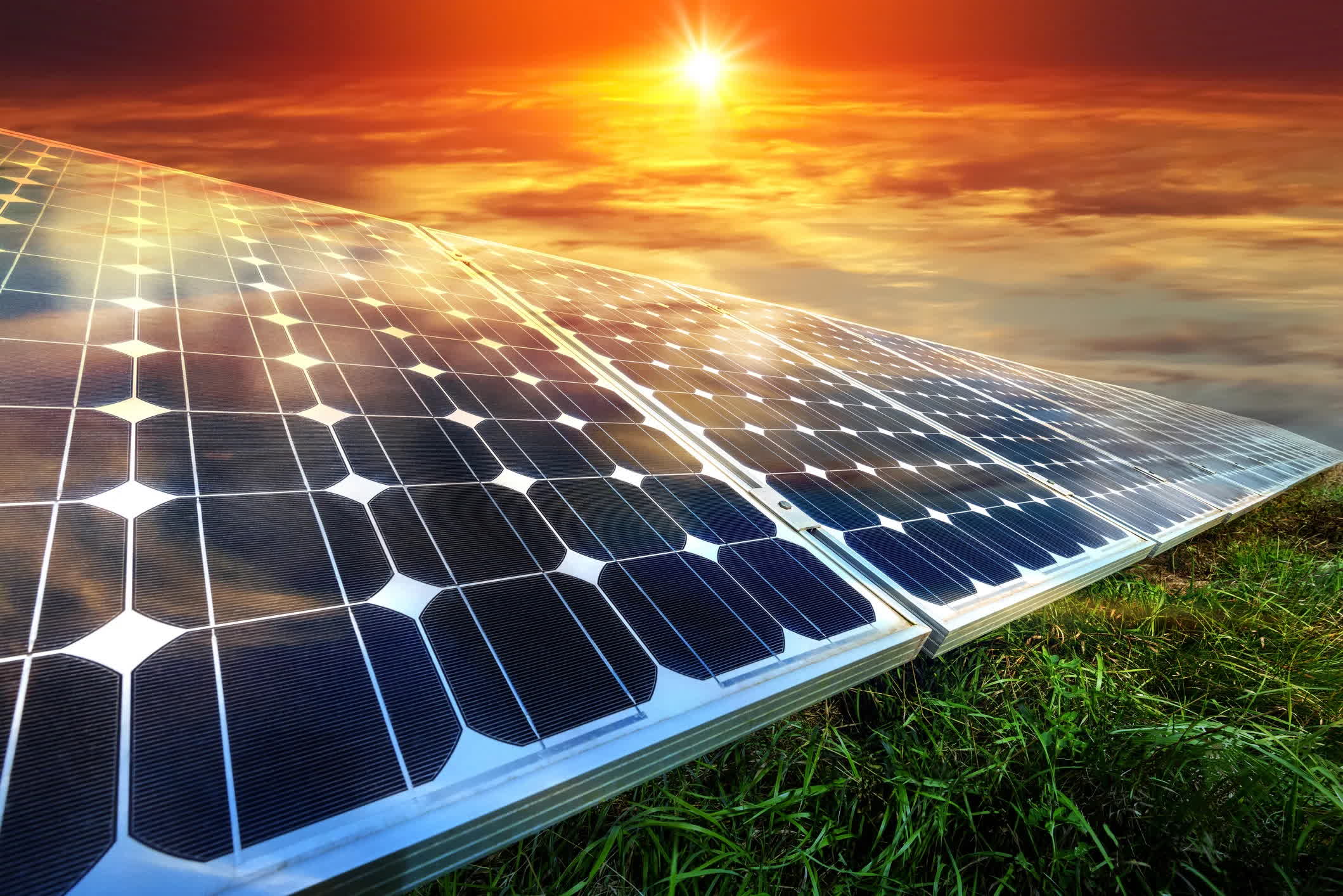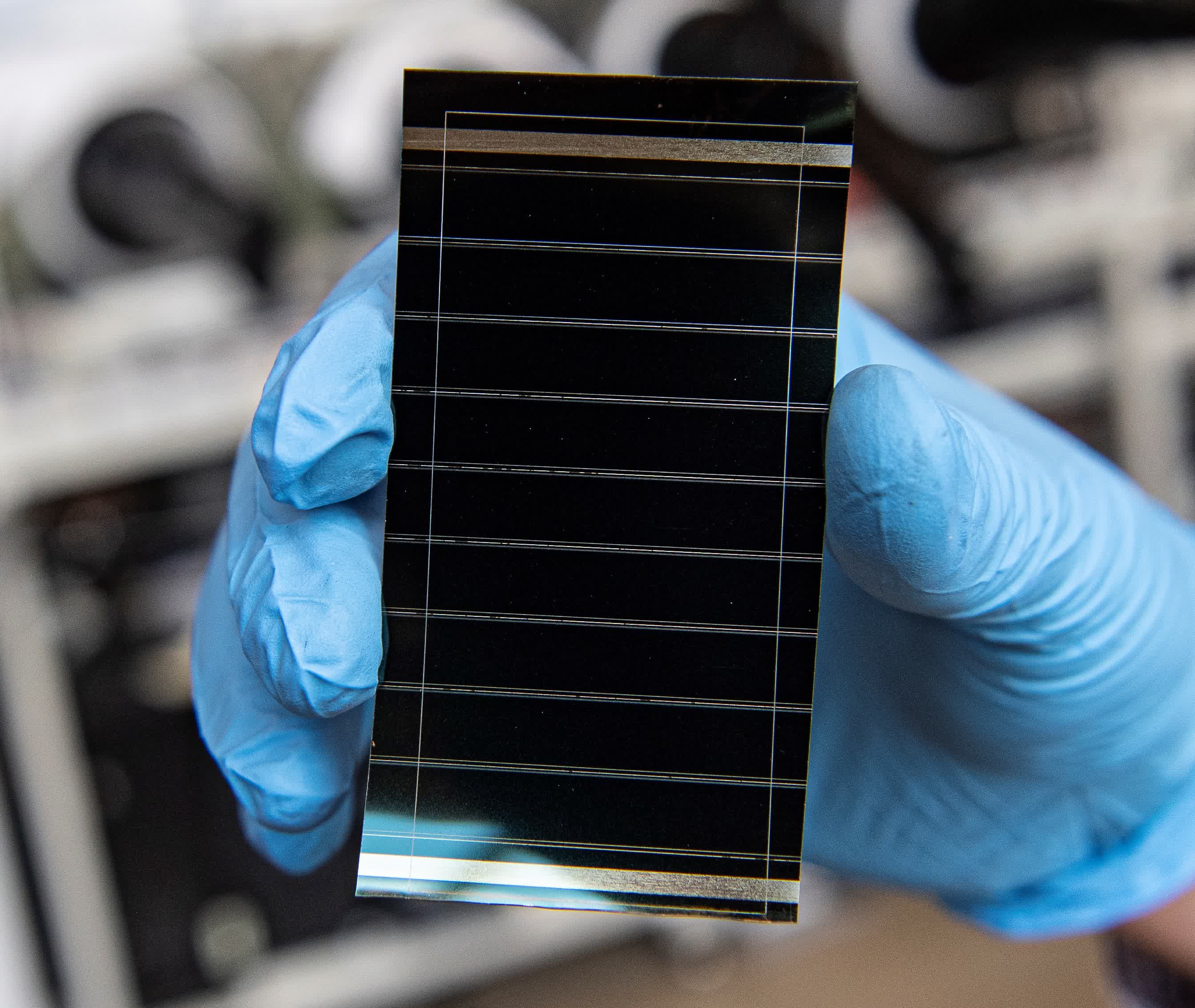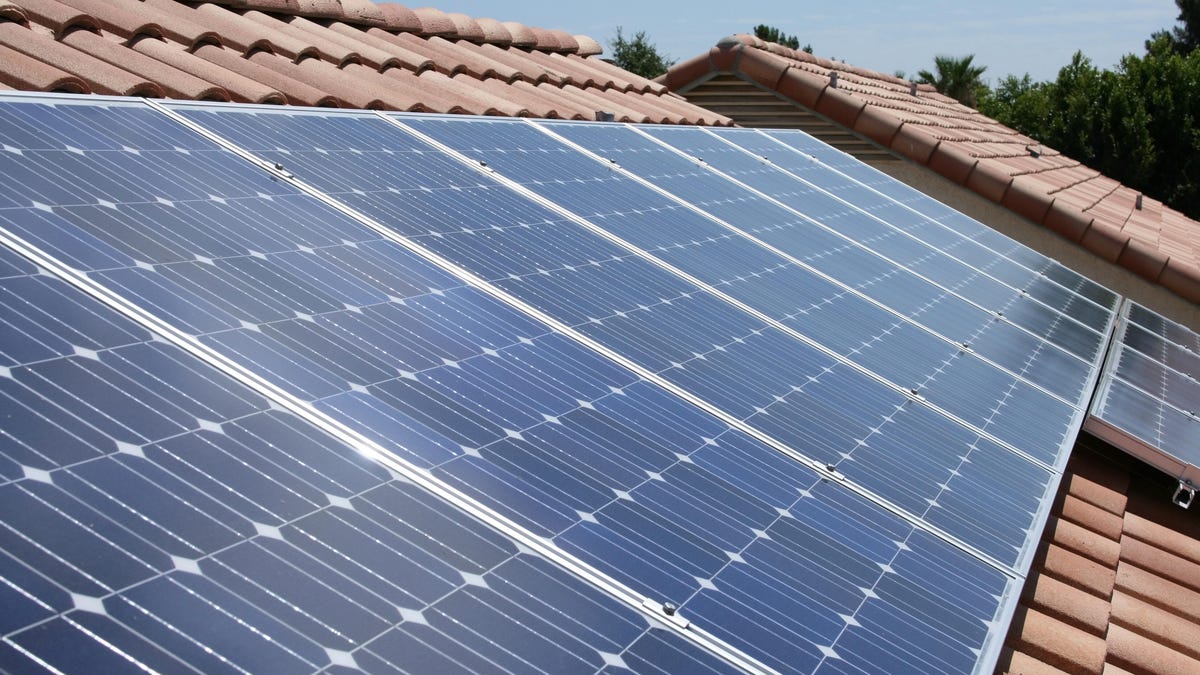Forward-looking: Traditional solar power cells are based on a silicon semiconductor compound, which is known to have a theoretical maximum efficiency of 29 percent in converting sunlight into electric energy. However, by incorporating a second perovskite layer onto the base silicon layer, solar cells have the potential to surpass this efficiency threshold in the near future.

Perovskite is a class of compounds that shares same crystal structure as the calcium titanium oxide mineral. This highly flexible material is used in a variety of applications including ultrasound machines, memory chips, and solar cells for power generation. Recent studies suggest perovskite could be the "secret sauce" to propel the solar cell industry towards new levels of power generation efficiency.
Current solar cell technology is rapidly approaching its maximum efficiency level, but still falls short of what is needed for solar power to be a significant mitigating factor against global warming. Scientists say efficiency must surpass 30 percent, and the installation rate of new solar panels must increase tenfold compared to current adoption levels.
By adding an additional layer of perovskite on top of a silicon base, both possessing semiconductor properties, the amount of energy captured from sunlight can be enhanced. The silicon layer captures electrons from red light, while the perovskite layer captures blue light. Improved energy absorption capability will lead to a reduction in the overall price of solar energy, thereby enabling faster deployment and adoption of solar panels.
Scientists have spent years developing an efficient silicon-perovskite solar cell technology, and it appears that 2023 will mark a significant milestone in this field. Recent research advancements have successfully pushed the efficiency of silicon-perovskite tandem cells beyond 30 percent. The pace of progress is so rapid that this technology will soon demonstrate its enhanced capabilities in commercially available products.

Stefaan De Wolf, a professor of material science and engineering at King Abdullah University of Science and Technology in Saudi Arabia, believes that 2023 will bring significant advancements. De Wolf's team has already achieved an efficiency level of 33.7 percent in a silicon-perovskite solar cell, but their work still needs to be published in scientific journals.
Another group, led by Steve Albrecht at the Helmholtz Center Berlin for Materials and Energy in Germany, recently published a study about a tandem silicon-perovskite cell that can achieve power conversion efficiencies of up to 32.5 percent. A third group led by Xin Yu Chin at the Federal Institute of Technology in Lausanne, Switzerland, has demonstrated an efficiency level of 31.25 percent with tandem cells having the "potential for both high efficiency and low manufacturing costs."
According to De Wolf, surpassing the 30 percent energy threshold instills confidence that "high performance, low-cost PVs can be brought to the market." Solar power capacity reached 1.2 terawatts (TW) in 2022, and it must increase to at least 75TW by 2050 to mitigate the most catastrophic scenarios arising from global warming and greenhouse gases.
The commercial industry is actively working on enhancing solar cells efficiency. China's biggest manufacturer (LONGi) has already reached a 33.5 percent efficiency in the lab. The next step involves scaling up the size of efficient silicon-perovskite tandem cells from experimental conditions (1 cm squares) to commercial-level features (15cm squares). De Wolf expresses confidence that we will reach this goal sooner rather than later.
